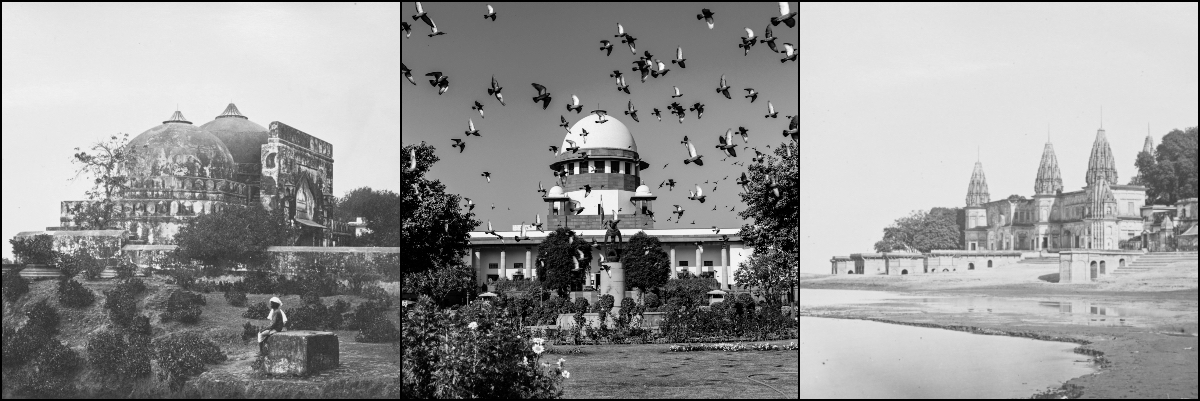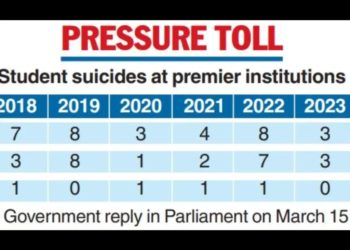
In a unanimous judgement, the Supreme Court in the Babri Masjid-Ram Janambhoomi title suit, handed over the entire 2.77 acres of land on which the mosque stood in Ayodhya, Uttar Pradesh to a trust to be created under Sections 6 and 7 of the Acquisition of Certain Area at Ayodhya Act, 1993.
The Central Government is tasked with formulating a scheme for the same within a period of three months, making necessary provisions with regard to the functioning of the trust, its management, powers of trustees, construction of a temple and all necessary, incidental and supplemental matters. Till such trust is created and possession of both inner and outer courtyard is handed over to the trust, the disputed property will remain in the possession of a statutory receiver.
Using its powers under Article 142 of the Constitution, the apex court directed the allotment of a suitable plot of land measuring 5 acres to the U.P. Sunni Central Waqf Board. The court has directed that this land be allotted either by the central government “out of the land acquired under the Ayodhya Act, 1993” or by the state government at a “suitable, prominent place in Ayodhya”. The Sunni Waqf board has been given the liberty, upon allotment of the land, to take necessary steps for the construction of a mosque with other associated facilities.
The court said that the possession of the disputed property, for now, was to remain with the Central Government and once the Trust was constituted, the possession of inner and outer courtyards was to be handed over to the Trust for construction and management of the temple.
The rights of worship of Ram Lalla, as claimed by the plaintiff in Suit 1 (G.S. Visharad) were affirmed subject to restrictions imposed by relevant authorities with respect to the maintenance of peace and order and maintenance of orderly worship.
The judgement was delivered by a five-judge bench headed by Chief Justice of Indian Ranjan Gogoi and Justices S A Bobde, D Y Chandrachud, Ashok Bhushan and S Abdul Nazeer.
Before handing down the judgment, the court observed that “this Court, set up under constitutional scheme, should defer from interfering with faith and belief of worshippers. Secularism is the basic feature of the Constitution”.
The bench further noted “every judge of this court has the task to uphold (the) Constitution. Cannot differentiate between one religion and another”.
Deity is a judicial person
The constitution bench held that Ram Janmabhoomi ws not a legal personality but Ram Lalla, the deity is a juridical person.
Archaeological Survey of India report
On the report of the Archaeological Survey of India (ASI), the court noted that ASI had refrained from recording a finding on whether a mosque was built after demolishing a Hindu temple.
The court observed that the finding of the title could not be based only on the expert report of the ASI even if the existence of a structure beneath the mosque was found to be of Hindu origin.
It said the ASI report had shown that the Babri Masjid was not built on vacant land and that the underlying structure was not of Islamic origin. It was not conclusive, however, if the under the underlying structure was a Hindu temple.
Judicial inquiry on belief
The court observed that the Hindus believed that Lord Ram was born right below the central dome of the disputed structure and both Hindus and Muslims witnesses had indicated that they were offering prayers at the disputed site.
“Whether a belief is justified is beyond judicial inquiry. Once faith is established, courts should defer to it … the court should preserve balance”.
Title suit by Nirmohi Akhara (No 3), Sunni Board (No 4) and Ram Lalla (No 5)
On title suit filed by Nirmohi Akhara, the court observed that the title suit was governed by Article 120 of Limitation Act and is barred by limitation.
The Nirmohi Akhara, it noted, was not a Shebait and the rights exercised by the Akhara were intermittent and peripheral and had been constantly contested. A stray or intermittent exercise of management rights did not confer upon the Akhara the status of a de facto Shebait, the court held.
It said the title to the land should be decided based on settled legal principles and on evidence adduced in a court of law. Title cannot be established based on faith and belief, the court said.
On title suit number 4 of Sunni Board, the court observed that it was a suit for possession and covered by Article 142 of Limitation Act. Limitation of title in suit number 4 was 12 years and within time, it observed.
Both suit number 4 of the Sunni Board and suit 5 of Ram Lalla had to be decreed and relief moulded.
The court held that the possession as asserted by Muslims could not meet the threshold of adverse possession in the absence of sufficient evidence to prove exclusive use. The court noted that from documentary evidence it had emerged that prior to 1857 there was no exclusion of Hindus from worshipping at the site by Muslims and that the outer courtyard had become the focal point of worshipping by Hindus.
The court said that the riots of 1934 indicated that the possession of the inner courtyard become a matter of serious contention and the Muslims had not been able to establish possessory title to the inner courtyard.
The court observed that the Muslims had not brought evidence to show possessory title and there was no evidence to show the offer of Namaz by Muslims was to the exclusion of Hindus whereas the Hindus had been able to establish unimpeded possession of the outer courtyard.
The court held that on a balance of probabilities, there was clear evidence that Hindus worshipped in the outer courtyard while at no point of time had Muslims abandoned worshipping in the disputed structure.
The judgement of the Supreme Court comes after a 40-day hearing on a petition filed against a three-judge bench judgement of the Allahabad High Court delivered on September 30, 2010.
The Allahabad High Court had then ordered that the disputed land of 2.77 acres in Ayodhya be divided equally between the representatives of Sunni Central Waqf Board, Nirmohi Akhara and Ram Lalla.




